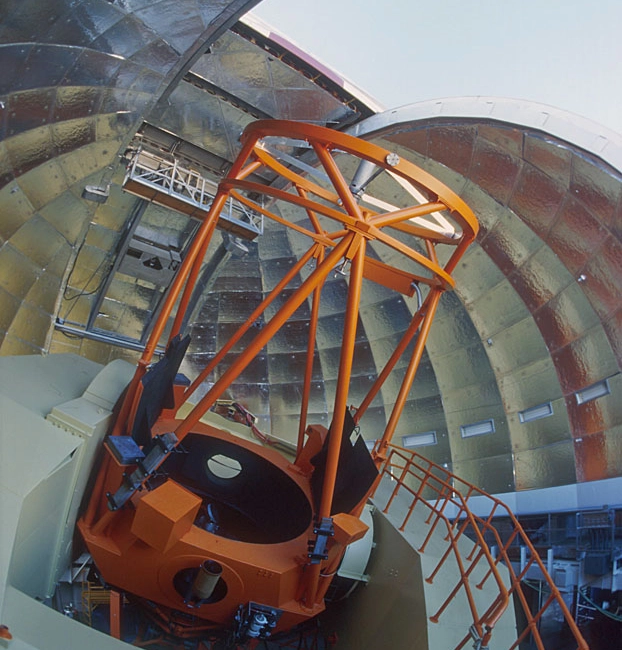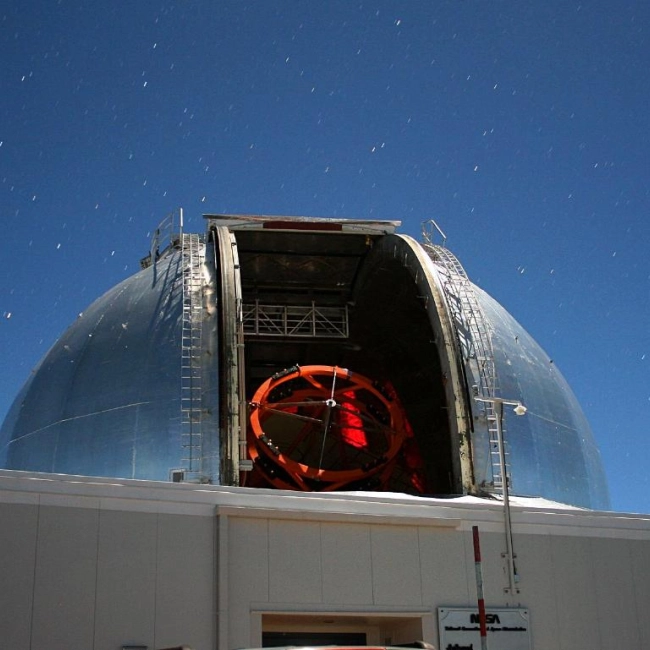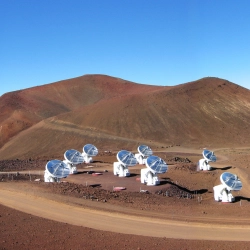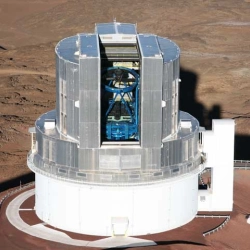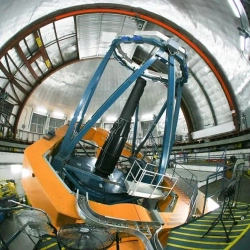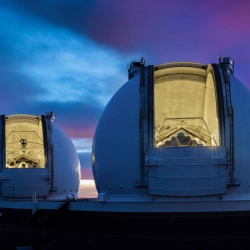The NASA Infrared Telescope Facility (IRTF), located at the Mauna Kea Observatory in Hawaii, is a 3.2-meter telescope optimized for observations in the infrared spectrum. Originally built to support the Voyager missions, it now serves as the United States’ national facility for infrared astronomy, dedicating at least 50% of its observing time to planetary science. Operated by the University of Hawaii under a cooperative agreement with NASA, the IRTF has been instrumental in the study of Solar System objects, the solar neighborhood, and deep space.
The IRTF is equipped with several advanced instruments that enhance its observational capabilities. Among them is SpeX, a medium-resolution spectrograph covering wavelengths from 0.8 to 5.4 micrometers, used in a wide range of planetary and astrophysical research. Another key instrument is iSHELL, a high-resolution echelle spectrograph operating between 1 and 5.3 micrometers, offering broader spectral coverage per setting compared to its predecessor, CSHELL. The facility also includes MIRSI, a thermal infrared imaging camera covering 2.2 to 25 micrometers and offering spectrographic capability via a diffraction grating. These instruments have enabled the IRTF to contribute to significant observations, such as studies of volcanism on Io, Saturn’s atmosphere and rings during the Cassini mission, and mapping of water and methane in Mars’ atmosphere.
A notable feature of the IRTF is its remote observing capability, which allows astronomers to operate instruments and conduct observations from any location with high-speed internet access. This has enabled more flexible scheduling and allowed researchers to perform observations more frequently without the need to travel to the observatory. The combination of its prime location on Mauna Kea, state-of-the-art instrumentation, and remote operation capability makes the IRTF an essential tool for infrared astronomical research and the detailed study of celestial bodies both within and beyond our solar system.


